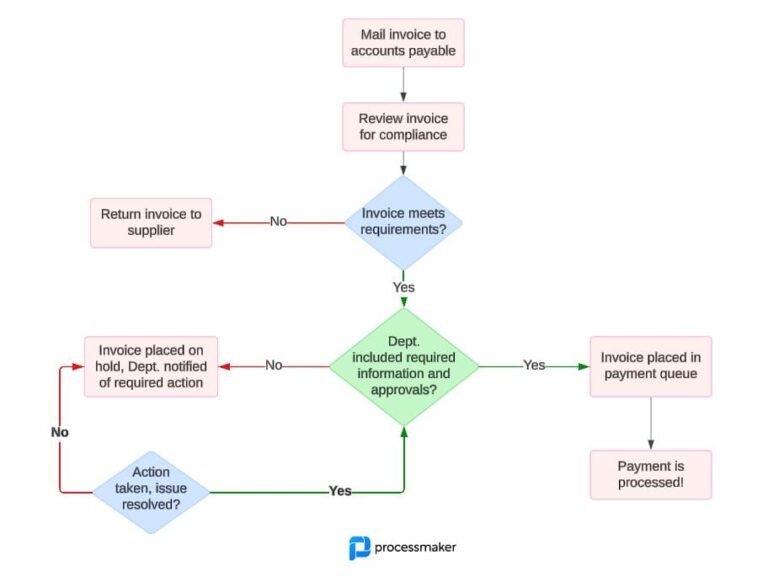For many organizations, inefficiencies and wastes are accepted as a necessary byproduct of running a business. Yet a workflow management system offers organizations all the tools that they need to optimize and streamline their business operations. While workflow management systems offer a broad range of benefits like cost savings and enhanced security, there are 4 key productivity benefits of workflow management solutions:
- Improved transparency in business processes
- Flexibility in adding to or subtracting from preexisting workflows
- Gaining deeper insights into business processes
- Streamlining tasks to boost productivity
Increasing transparency in business processes
An important benefit of workflow management is increasing trust among employees through transparency. Employees are shown how a specific process operates from beginning to end. They gain an understanding of the overall objective of a process, the delegation of responsibilities and tasks, and what comes next.
Transparency can be achieved in several ways. An organization could create detailed business process maps or workflow diagrams. These visual depictions of a business process show how it operates from start to finish, as well as key decisions points made along the way. Another useful method for achieving transparency is utilizing a workflow management system. With a workflow management system, employees can view where they are in a process in real-time, providing them useful guidance along the way.
Coming, going, and evolving
Workflows are rarely static. Not only are tasks constantly evolving but those responsible for completing those tasks can change regularly, particularly within larger organizations. Thus, organizations need the flexibility to easily add or extract employees and tasks from pre-existing workflow processes.
The most obvious examples of this need for flexibility are employee onboarding and offboarding. When an employee is hired, he or she must be added to the workflows that correspond to the tasks that the employee is responsible for. Likewise, when an employee is terminated, an organization must delegate the departing employee’s responsibilities to ensure that there are no decreases in productivity. It is also not uncommon for management to change. Workflows like automated approval processes may need to be rerouted to ensure that requests are sent to the right stakeholder for approval.
A workflow management system provides organizations with the flexibility they need to meet these challenges in real-time. Stakeholders can easily view workflows, adding and subtracting both participants and tasks as needed, as well as handling all back-office administrative tasks associated with those changes.
Deeper insights into company’s data and spotting errors
One of the biggest benefits of a workflow management system is the ability to access data and make more informed decisions in workflow optimization. Yet this requires that data be both accurate and accessible in real-time. However, according to experts, approximately 1 out of 4 organizations are not even sure if the data that they are relying on is accurate. Others rely on antiquated workflow management software that do not have real time capabilities.
The shortcomings of inaccurate data are obvious. Decisions are only informed to the extent that they reflect the realities of an organization’s business processes. There are numerous potential causes of faulty data. For example, selecting and monitoring the wrong performance indicators. Data that is not in real-time is also generally inaccurate.
Consider a typical workflow like new customer onboarding. Suppose that in the past the process used to take an average of 10 days. Seeking to improve the efficiency and productivity of this workflow, your organization implements an automation solution. The process now takes one day. Yet for some reason the past week the onboarding process has been taking 3 days. Without access to real-time data it is impossible to pinpoint the cause for the delay.
Workflows are fluid. Organizations need instantaneous feedback to identify and resolve bottlenecks. A modern workflow management system provides stakeholders with the powerful insights that they need to get the most out of their processes.
Streamlining tasks to increase productivity
A comprehensive workflow management system allows organizations to leverage powerful automation solutions. According to research by McKinsey, an estimated 60% of occupations could save 30% of their time with automation. The types of tasks that are suitable for automation are those that are time-consuming and repetitive. For instance, replacing error prone manual data entry tasks with an automation solution that extracts and inputs data into a centralized data management system.
In addition to saving time and reducing errors, a workflow management system significantly boosts employee productivity. They find comfort in knowing what tasks they are responsible for and enjoy working on tasks that provide more value to the organization. Employees are also able to manage their time better and are provided with seamless communication throughout the organization.
A workflow management system also needs to give organizations flexibility. Stakeholders must be able to implement changes to respond to real-world challenges. The COVID-19 pandemic is a case in point. Suddenly, entire workforces were required to shift to remote work. Budget cuts and decreased consumer demand forced employees to wear multiple hats. Those organizations that were in the best position to respond to these challenges were those that could restructure their workflows on the fly. With a workflow management system, organizations can plan for these types of challenges and fluctuations, crafting a suitable and effective response.
Final Thought
Organizations are facing more uncertainty and challenges than ever. Leveraging an automated solution like workflow management software provides organizations with unmatched flexibility and efficiency. ProcessMaker provides world-class low-code workflow management software that can help take your organization to the next level.





